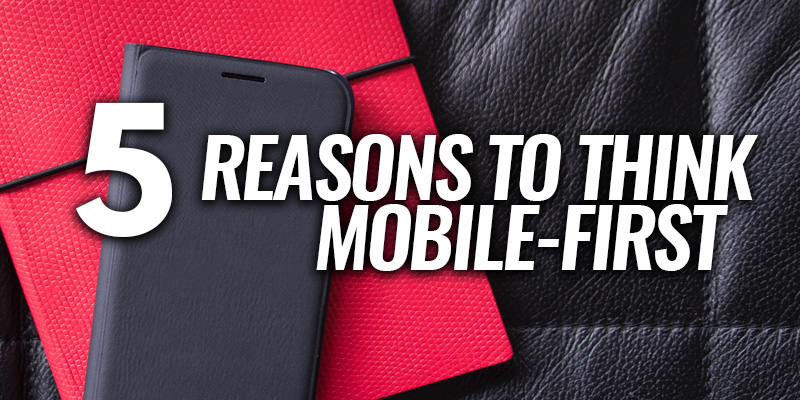
5 Reasons to Think Mobile-First3 min read
July 26, 2017It wasn’t too long ago that your website only required you to think about how it would display on desktop computers. In today’s world, if you aren’t thinking about mobile and tablet devices, as well, you are likely ignoring the majority of your visitors’ preferred method of interacting with your web content. That’s because as many as 60% of all internet searches now take place on mobile devices.
So, now is the time to start thinking about your website from a mobile-first view rather than the desktop-first mentality of yesterday. Simply put, thinking mobile-first means placing the emphasis on user experience on mobile devices, rather than having it be an afterthought to the desktop design.
Here are five reasons to think mobile-first.
- As early as 2015, more mobile searches were performed than desktop searches in 10 countries, including the US. The latest estimates released in August 2016 were up to nearly 60%, and it hasn’t shown signs of slowing down. If you focus strictly on the desktop, the majority of visitors from search (often first-time visitors) will not receive the best version of your site. You missed your chance at a great first impression, so what’s the likelihood they’ll be back?
- Google uses mobile-friendliness as a ranking signal. Google’s goal has always been to deliver the most relevant, high-quality results. These results need to load fast, and the users should have a great experience with the website. If they load your website on a mobile device that it’s not optimized for, it can have buttons that are too close and difficult to click, images that are too large and take forever to load, or text that is too small to read. None of these situations provide the user with a good experience!
-

Image heavy websites like Victorian Heritage would load much slower if they focused primarily on the desktop version. When your mobile website is an afterthought, resources such as images, PDFs, and other documents can cause such a slow-down that your would-be visitors abandon your page. On your desktop, these resources may load quickly due to the computers’ processing speed and internet connection, but as you likely already know, their mobile counterparts can’t always match the power of a desktop. If it takes more than 3 seconds to load, studies have shown that more than half of mobile visitors will abandon your site. Loading smaller images, optimizing PDFs, and taking other necessary steps to ensure the best load time on all devices is critical.
- When mobile websites first came out, they typically were a stripped down version of your desktop website. Most of the time they had a simplified theme, only a few pages, and looked different from your desktop version so customers weren’t always sure they were on the same website. Today, your website can be made responsive, which means it shows the same (or nearly identical) version on all devices. You can keep the familiarity without sacrificing speed, performance, or functionality.
- Google has begun testing a mobile-first index which they intend to launch sometime in 2018. This means that rather than ranking websites according to their desktop versions, Google will rank them based on the mobile version. So, even if your website performs well currently without a mobile version, this may change once that mobile-first index launches.
Stay ahead of your competition with this helpful look into why you should be thinking with a mobile-first mindset when it comes to your website development. If your business lacks a mobile website, or it isn’t performing well enough and you’re worried about the upcoming changes, be sure to contact us today for a free consultation on improving your website’s mobile performance. We’re one of the first internet marketing firms in Lancaster to secure Google’s “Mobile Sites” certification, and you can rest assured knowing that we are experts in mobile site optimization!